
Students build woven pavilion to shade archaeologists in Peru's desert
A woven white canopy, bamboo cane walls and earthen floors form this workspace for archaeologists on digs in Pachacamac, Peru, which was built by architecture students from Zurich and Lima.
The Room for Archaeologists and Kids is located an archaeological site 40 kilometres (25 miles) southeast of Lima. Called Pachacamac, it covers about 600 hectares of desert.
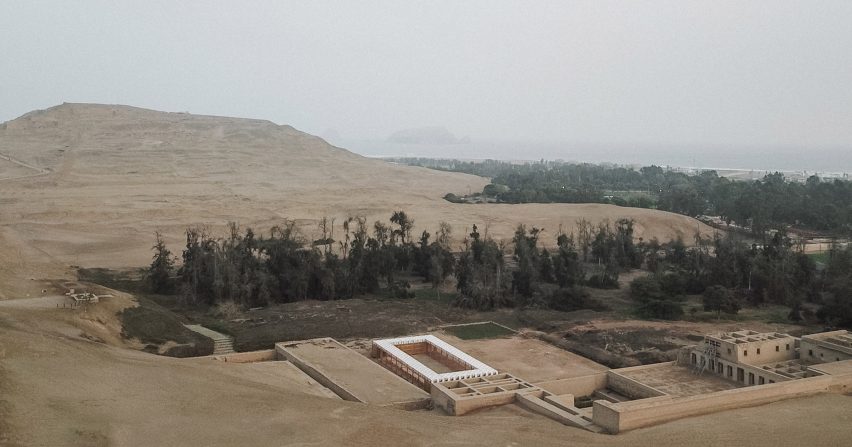
The pavilion forms the culmination of a collaborative project that teamed students from Studio Tom Emerson – a design and research studio in the architecture faculty at Swiss university ETH Zurich – and Taller 5 at Lima's Pontifical Catholic University of Peru.
Architects Guillaume Othenin-Girard and Vincent Juillerat led 45 students on the design, producing the outdoor structure in three weeks during June 2018.
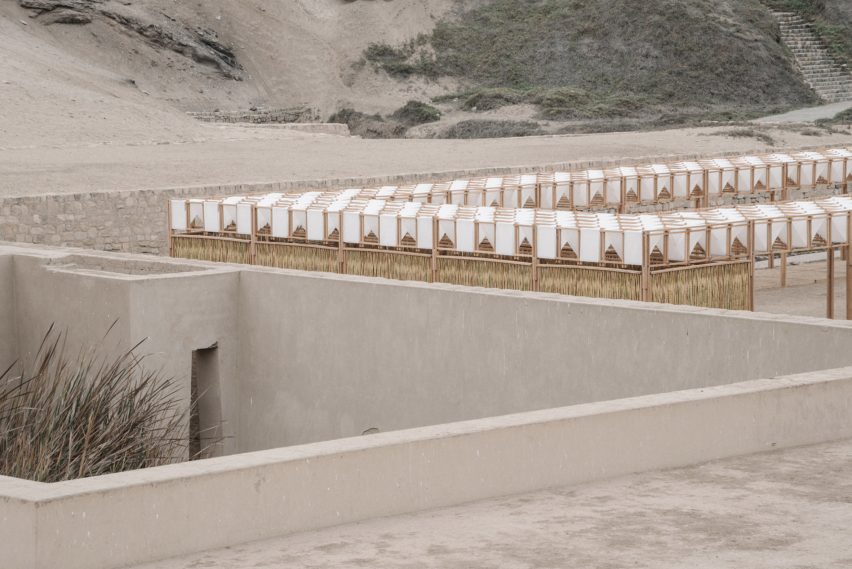
The pavilion provides shelter for archaeologists making their first examinations of artefacts that emerge from digs. It is designed to be open so that work can be undertaken in view of passing visitors and children from a nearby school.
Four linear outdoor walkways, made mostly of wood, form the rectangular shape of the structure with a sandy courtyard in the middle. It measures 37 metres by 16.3 metres in total, and rises 3.6 metres high.
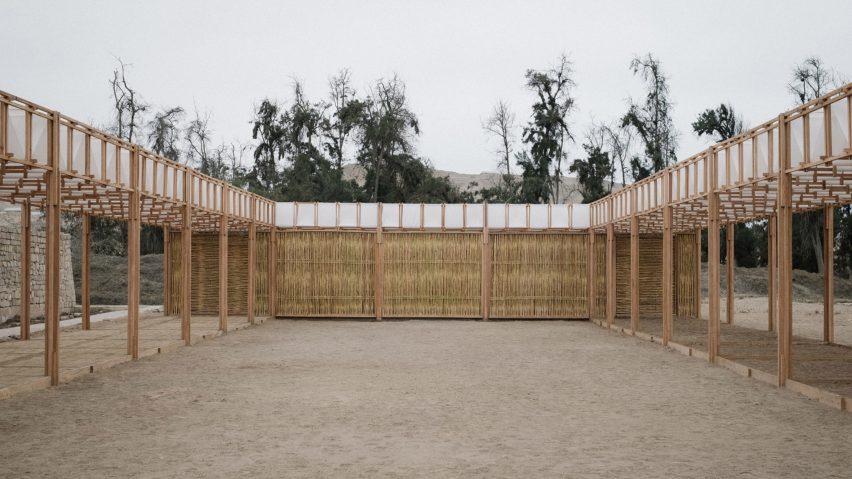
The roof is made from white polyester textile, which is woven in between upper and lower planes of wooden struts. This canopy provides layers of shade from the punishing Andean sun, while retaining views to the sky and landscape beyond.
"The design for the structure could be described as an 'upside-down table'; a rigid assembly of beams and columns anchored in the ground, supporting fields of lattice-work," said the team in a project description.
"In short: the roof was to do little more than support its own weight and stay rigid."
The Room for Archaeologists and Kids was built at the request of Museum of Pachacamac director Denise Pozzi-Escot. The pavilion includes an events space for the museum and its archaeology facilities, which Peruvian firm Llosa Cortegana Arquitectos built in 2015.
Flooring is formed of adobe bricks that are compacted together with earthen joints, merging with the overwhelming amount of sand on-site.
Bamboo cane was cut and hand-woven into panels, set vertically, for the wall and door pieces. These woven walls enclose rooms at either end for storing artefacts, before being transferred into the Museum of Pachacamac nearby for conservation.
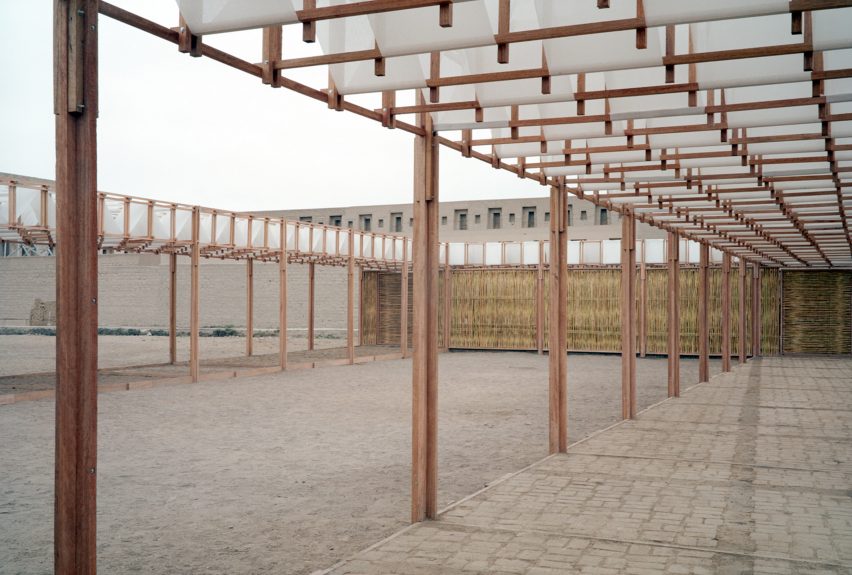
Also used in the construction is kiln-dried tornillo – a tropical hardwood found in the rainforest in Peru, which is both dense and flexible, and naturally resistant to fungus and humidity.
To complete the project, Studio Tom Emerson and Taller 5 split the 45 students into teams to develop ideas in the first few days. Then, smaller groups were formed to divide tasks and responsibilities.
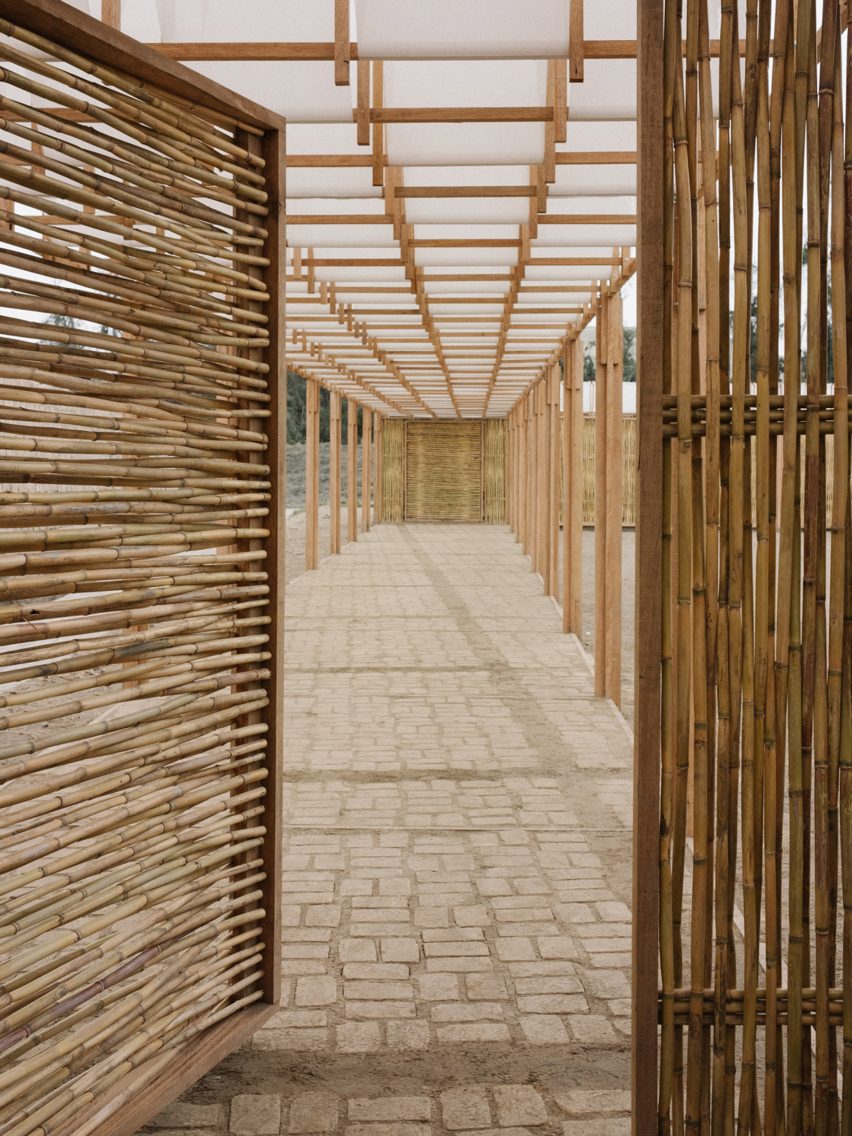
Most of the structure was prefabricated and assembled on site, including the columns and foundations. The roof lattices were also individually prefabricated too.
The pavilion is the result of a joint research project called Pachacamac Atlas: The Archaeology of the Territory. This produced a new topological survey of the site and its environmental surroundings.

"Such a survey of this unique landscape had never been made before, and revealed a new understanding of the place that enfolded its history within its contemporary condition," said the team.
When viewed from overhead, the project only stands out with its white roof. Nearby are tiered buildings from centuries past, including perimeter walls of Acllawasi, where a selected group of Incan women inhabited.
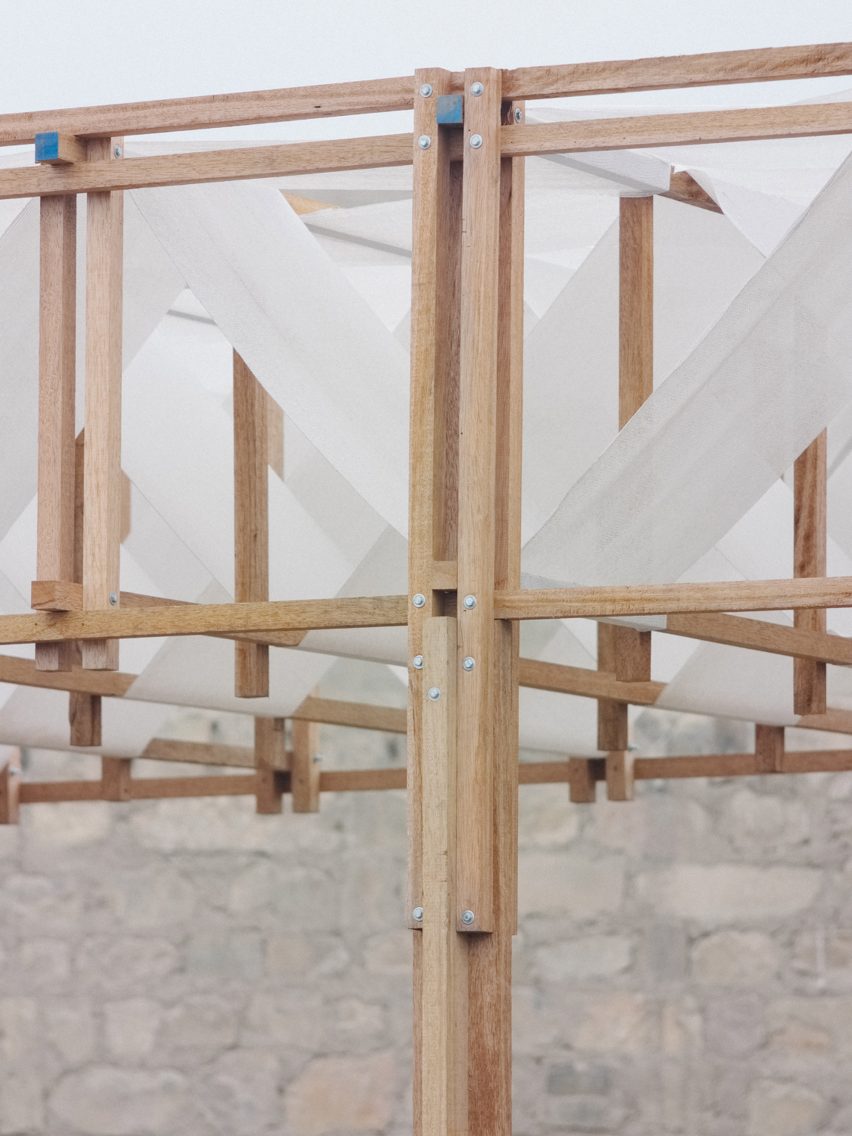
"Its powerful underlying hill topography was extended upwards with adobe and stone temples and palaces to form what must have been an unbelievably impressive place – the largest hill later becoming the Temple of the Sun in the Incan era," reads the study.
"The sanctuary of Pachacamac is a most extraordinary constructed landscape... and one of the biggest and most important of such city-complexes in what is today Peru," it continues. "It was once an isolated citadel: a strategic point located where the River Lurin meets the ocean, from which the entire surrounding territory could be controlled."
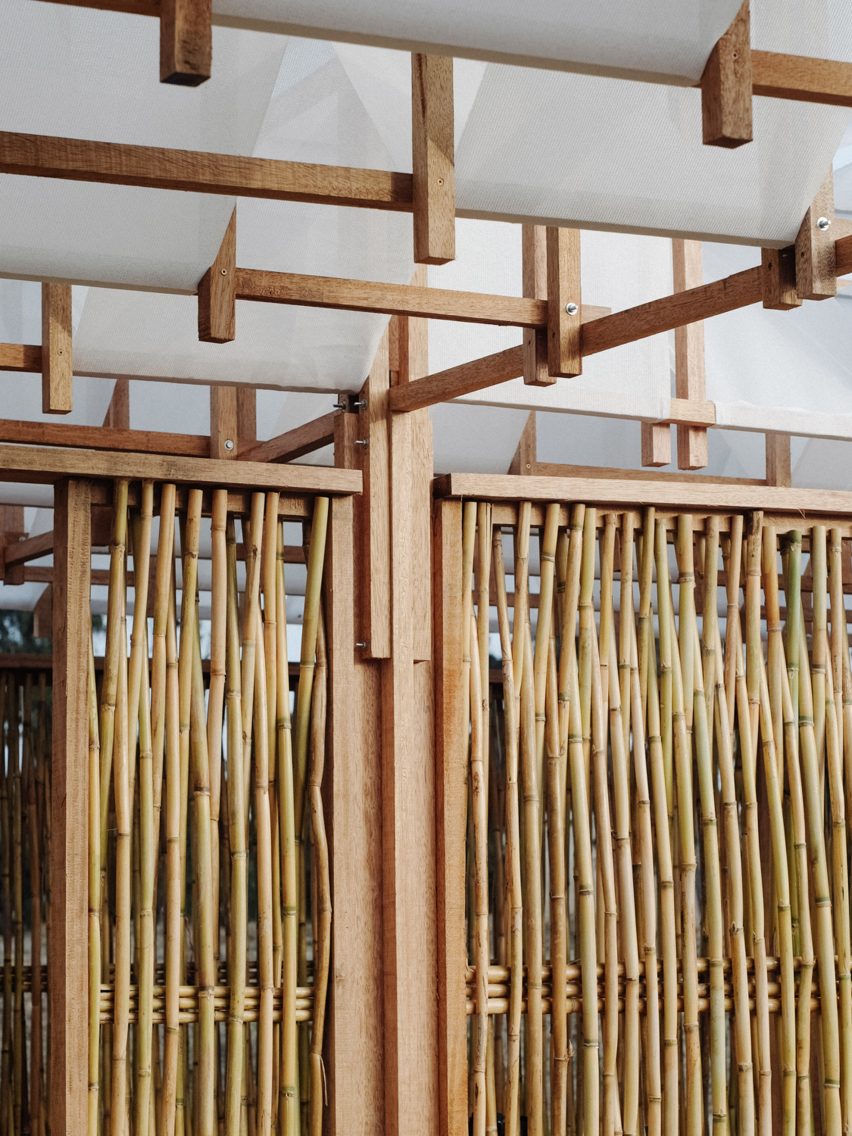
Following colonisation, Pachacamac fell into ruin and was slowly enveloped by sand. Investigations of the site only properly began in the early 20th century by Peruvian archaeologist Julio C Tello, and today much of Pachacamac remains to be unearthed.
Tello is also responsible for another archaeology site in Peru, which has been revitalised after an earthquake with the red-toned Museo de Sitio Julio C Tello by Barclay & Crousse. Here, Tello discovered burial sites over 2,000 years old, forming the Great Paracas Necropolis.
Photography is by Géraldine Recker and Philip Shelley.
Project credits:
Project leaders: Guillaume Othenin-Girard (ETHZ), Vincent Juillerat (PUCP)
Team: Tom Emerson, Guillaume Othenin-Girard, Philip Shelley, Vincent Juillerat, Renato Manrique
Students of ETH Zurich: Turi Colque, Lucio Crignola, Gabriel Fiette, Shen He, Severin Jann, Jens Knöpfel, Tamino Kuny, Sara Lazarevic, Stefan Liniger, Juliette Martin, David Moser, Géraldine Recker, Ellen Reinhard, Sara Sherif
Students of PUCP Lima: Keicko Aliaga, Gianmario Alva, Maria Andia, Ximena Arevalo, Valeria Armijo, Andrea Avendaño, Sebastian Blas, Daniela Cahuana, Martin Cevallos, Luis Miguel Enriquez, Diana Farje, Rosa Grados, Paola Medina, Arturo Meza, Andrea Montani, Nicolle Murrugarra, Valeria Namuche, Brigith Nuñez, Sebastian Ortiz de Zevallos, Milagros Ramos, Erika Ramos, Anahy Rimachi, Diego Rojas, Brenda Salcedo, Andrea Tezen, Angie Tipe, Carla Zegarra
Museum team: Denise Pozzi-Escot, Rommel Ángeles, Janet Oshiro Rivero, Carmen Rosa Uceda Brignole, Rocio Villar Astigueta
Engineer: Andrea Biancardi, ETH Zurich
Timber construction experts: Jonatan Egli, Francisco Otero Berta
Timber: Remasa El Pina
Groundwork: Lbc Construcciones
Scaffolding: Ángeles Arquitectura de Eventos
Construction: Ángeles Arquitectura de Eventos